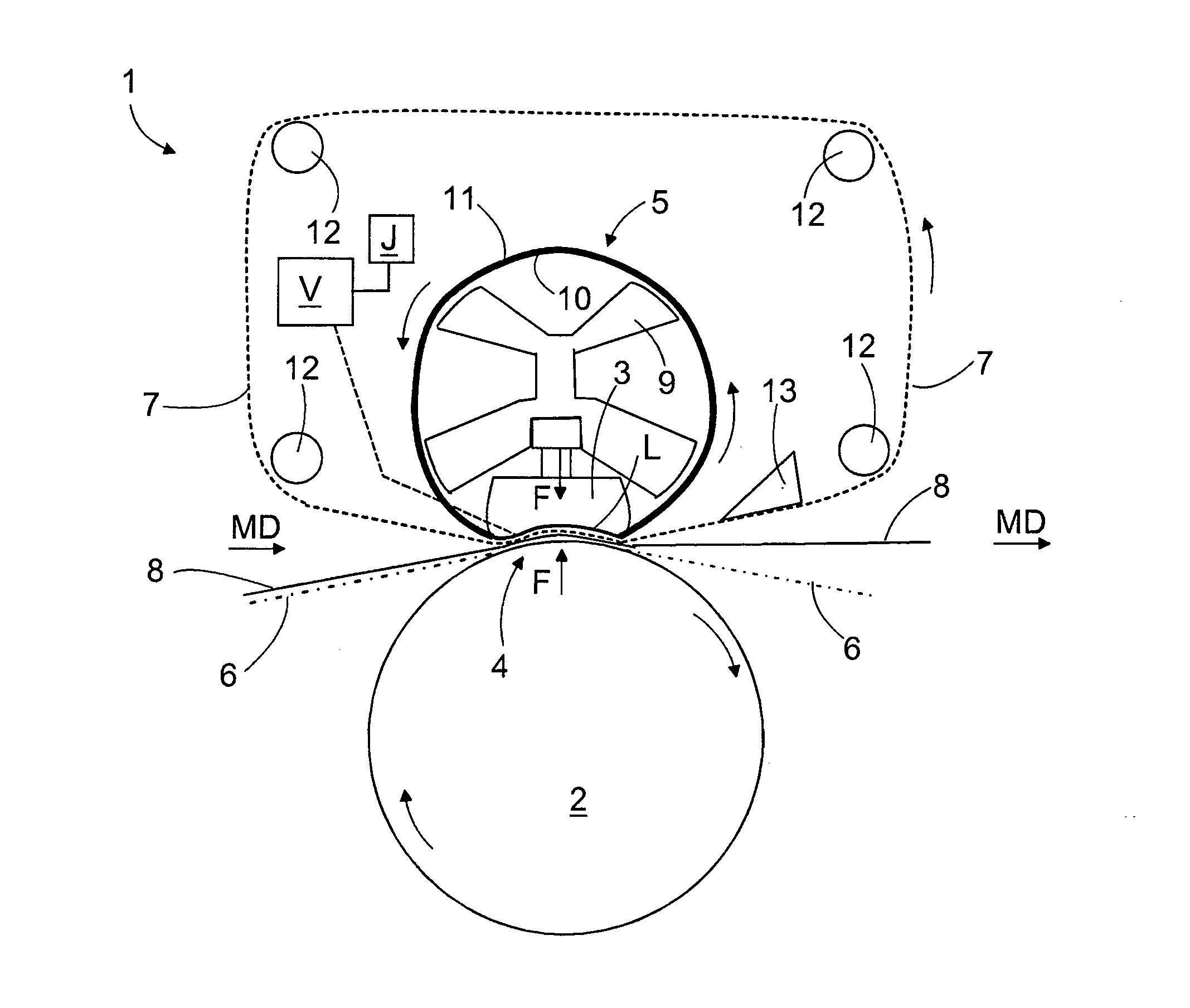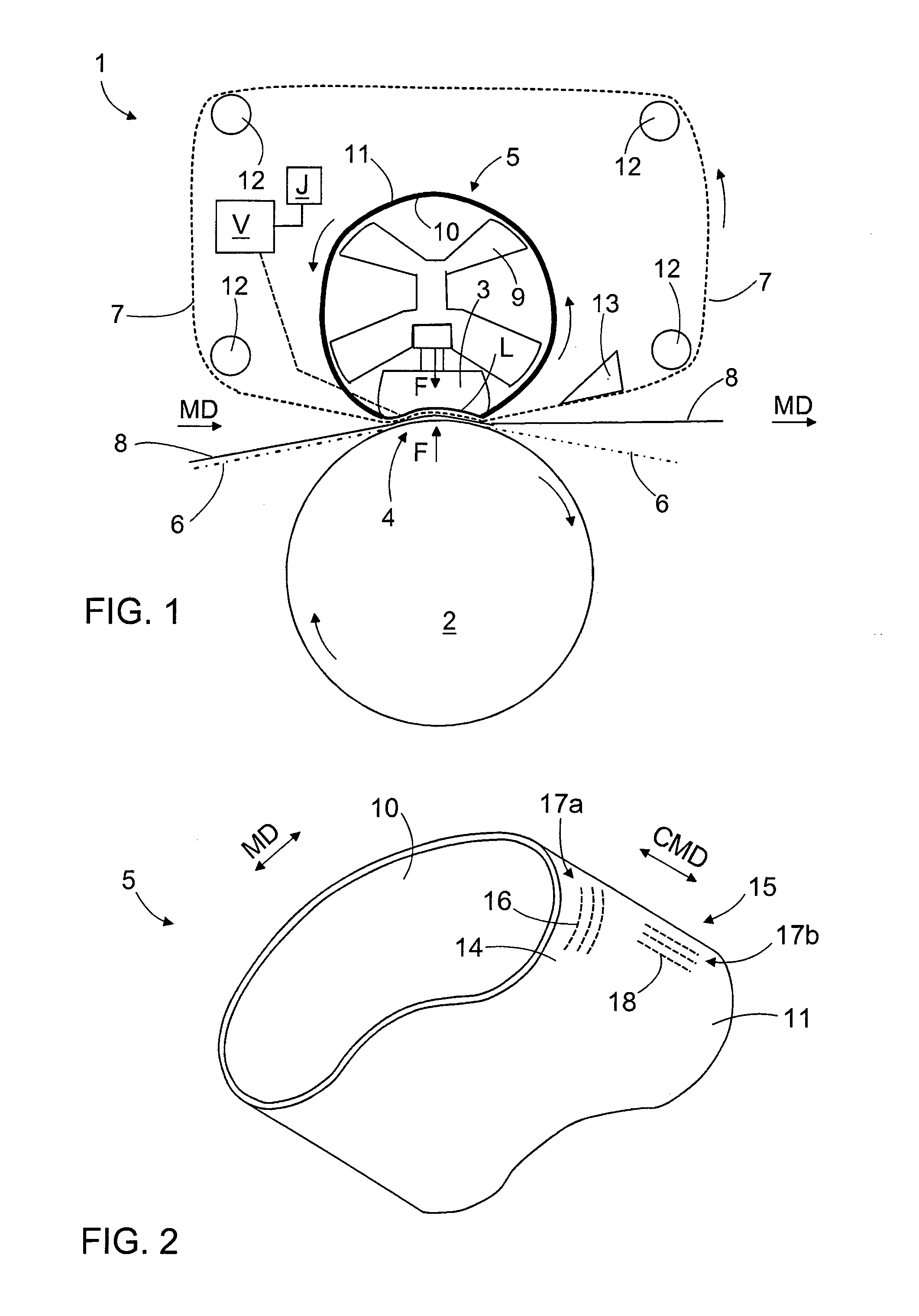Shoe press belt, method for manufacturing the same, and use in shoe press
a technology of polyurethane and press belt, which is applied in the field of shoe press belt, can solve the problems of insufficient heat resistance of press belt, and achieve the effects of excellent heat resistance, wear resistance and recovery from compression
- Summary
- Abstract
- Description
- Claims
- Application Information
AI Technical Summary
Benefits of technology
Problems solved by technology
Method used
Image
Examples
Embodiment Construction
[0034]FIG. 1 shows a simplified shoe press 1 which may comprise a press roll 2 and a press shoe 3, between which there is a press zone 4 through which a press belt 5, at least one paper machine fabric 6, 7 and a fibre web 8 to be dried may be arranged to be run in the machine direction MD. The press shoe 3 and the press roll 2 may be pressed against each other with a force F, whereby the press belt 5, the paper machine fabric 6, 7 and the fibre web 8 run between them are compressed. The press shoe 3 has a curved sliding surface L facing the press roll 2, whereby there is an extended contact area, i.e. what is called a long nip, between the press shoe 3 and the press roll 2. The press belt 5 may be arranged to pass around the press shoe 3, supported by an appropriate support member 9. An inner surface 10 of the press belt 5 slides against the sliding surface L of the press shoe 3, and an outer surface 11 of the belt faces the fibre web 8. The fibre web 8 may be brought to the press z...
PUM
| Property | Measurement | Unit |
|---|---|---|
| glass transition temperature Tg | aaaaa | aaaaa |
| glass transition temperature Tg | aaaaa | aaaaa |
| glass transition temperature Tg | aaaaa | aaaaa |
Abstract
Description
Claims
Application Information
 Login to View More
Login to View More - R&D
- Intellectual Property
- Life Sciences
- Materials
- Tech Scout
- Unparalleled Data Quality
- Higher Quality Content
- 60% Fewer Hallucinations
Browse by: Latest US Patents, China's latest patents, Technical Efficacy Thesaurus, Application Domain, Technology Topic, Popular Technical Reports.
© 2025 PatSnap. All rights reserved.Legal|Privacy policy|Modern Slavery Act Transparency Statement|Sitemap|About US| Contact US: help@patsnap.com



